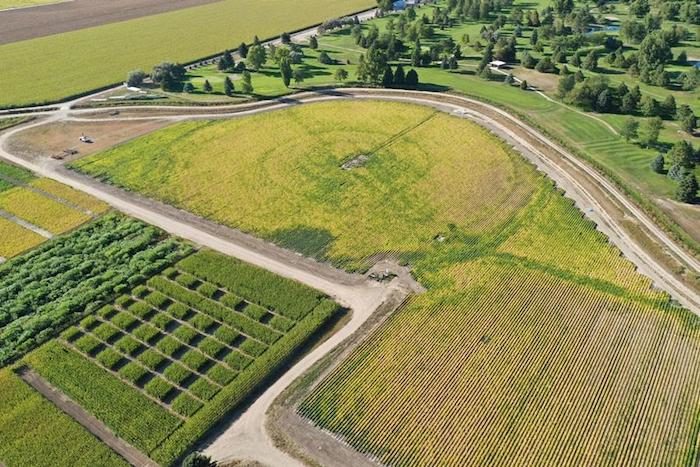A state-of-the-art subsurface drip irrigation (SDI) system has been installed at the Panhandle Research and Extension Center to provide for research and demonstration opportunities. The installation was made possible with support from 21st Century Water Technologies, Eco-Drip, and the Agriculture Research Division (ARD) of University of Nebraska-Lincoln.
SDI systems apply water directly to the crop root zone through buried plastic tapes with embedded emitters.
The PREC’s SDI system was installed in a field that originally had been two fields, one formerly irrigated by a two-span pivot and the other an adjacent rectangular field that had been irrigated with a side roll. This test field contains 24 management zones. Rows are 30 inches apart and drip tapes have been buried about 12 inches deep under every row. In 2018 the field was planted to great northern beans.
We plan to conduct research and demonstration projects to study:
- optimum irrigation scheduling strategy;
- optimum fertigation strategy;
- water-use efficiency and nitrogen-use efficiency under different scenarios; and
- performance characteristics such as water distribution patterns under different irrigation scenarios.
In the meantime, operation, maintenance and system issues will be documented in detail for future reference.
Irrigating with SDI
The major benefit of SDI systems is their water-use efficiency compared to sprinkler irrigation or furrow irrigation systems. Because drip tapes are buried at about 12 inches below the ground surface, depending on soil type and crop, the soil surface stays dry and water loss due to evaporation and runoff is minimized.

Figure 2. Above-ground and below-ground views of the SDI system. (Top) Above the ground, the pumping station (left) and the filtration station and control station (right) stand in the dry bean field irrigated by SDI. (Bottom) A hole on one side of the field exposes a section of plastic tape about 12 inches below the ground’s surface.
Another advantage of SDI is its flexibility to irrigate irregular-shaped fields (Figure 2). Other potential benefits include improved fertilizer and pesticide management, better weed control, and better disease control. An SDI system also allows farmers to perform more field operations, even during irrigation events.
While the benefits are significant, there are also challenges as there are with other systems. These include high initial investment, challenges of adapting to a new management practice, plant germination (especially in sandy soil), and damage from rodents.
Continued research in cropping systems typical to western Nebraska will help us identify potential issues and research best management practices for growers adopting this new technology.






